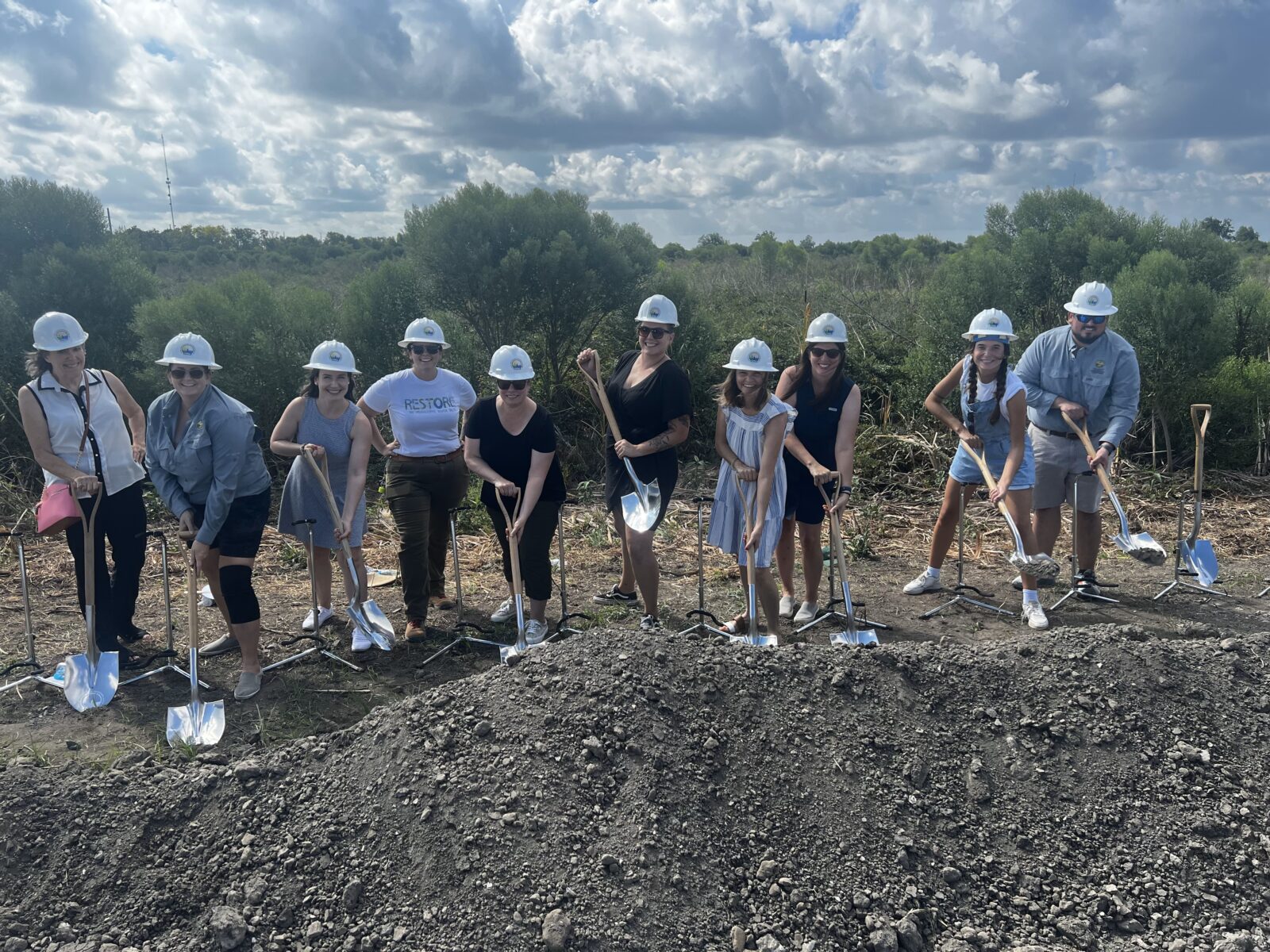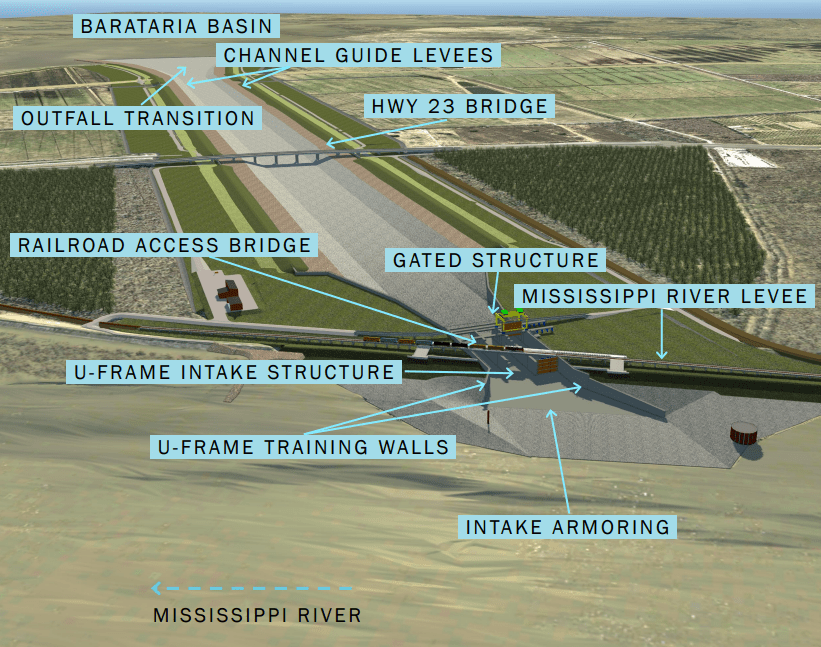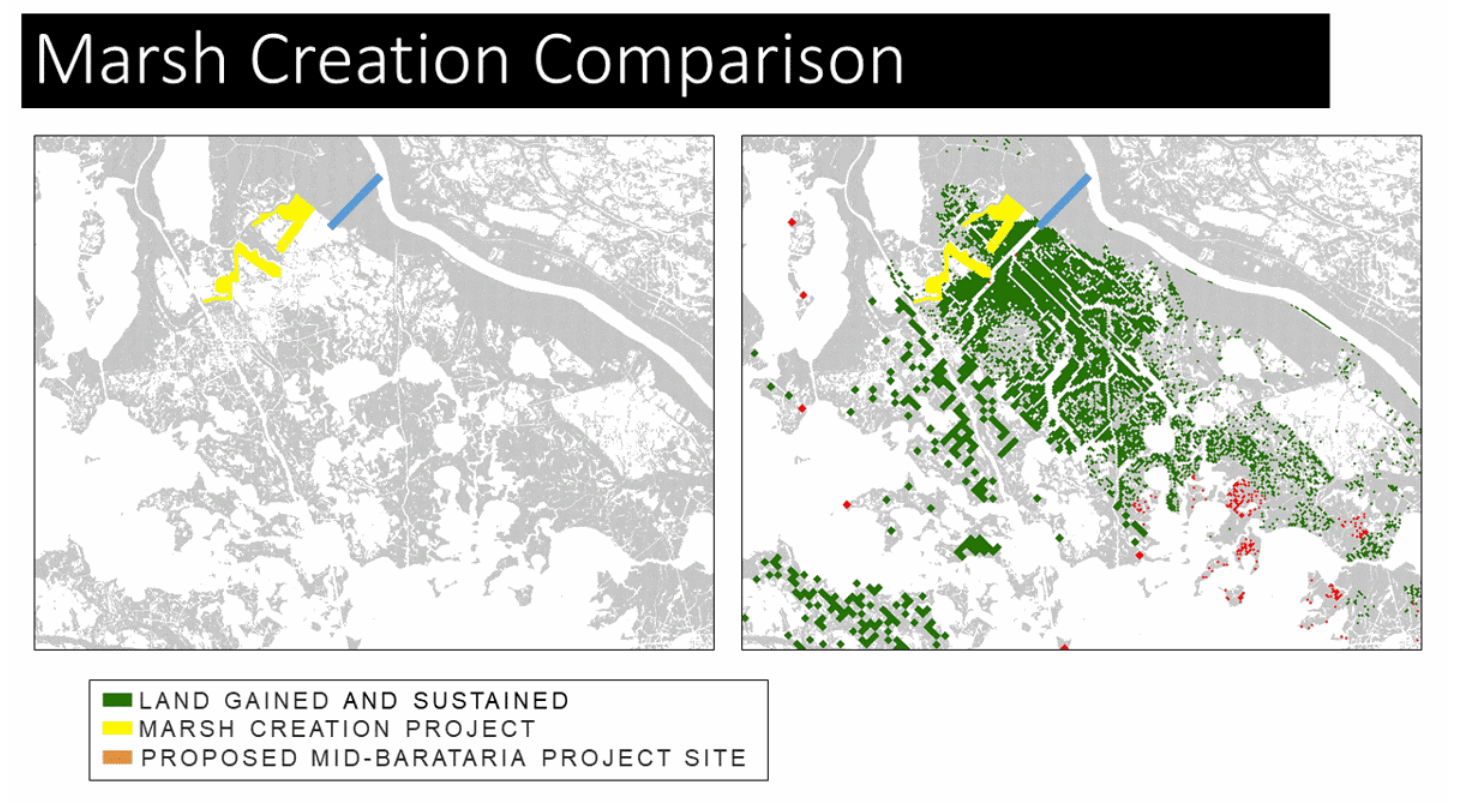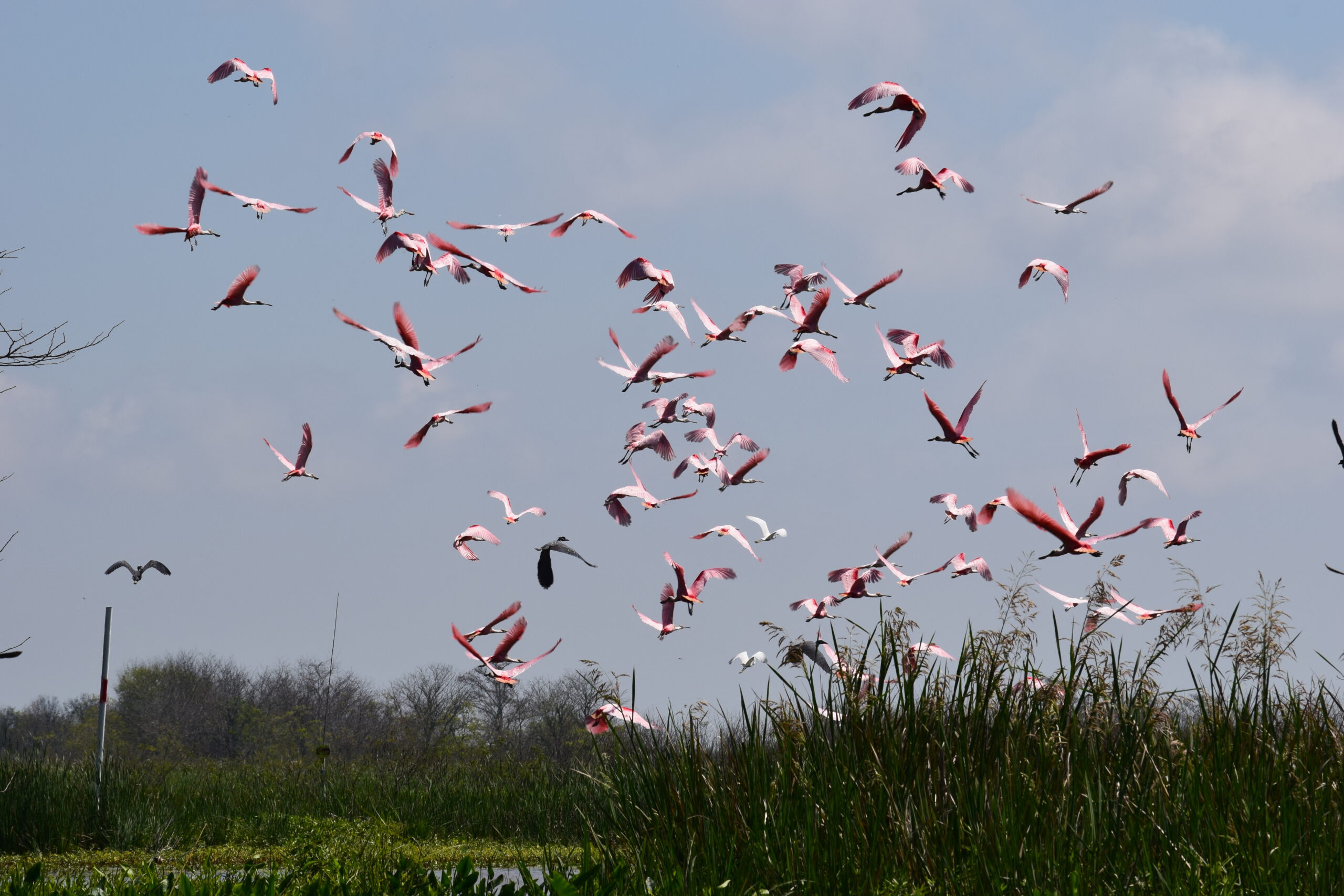We have much more to do and your continued support is needed now more than ever.
Disappearing Before Our Very Eyes, Louisiana Embraces the Power of Nature to Save its Coast

I was in a work Zoom meeting when the ‘Save the Date’ for the Mid-Barataria Sediment Diversion groundbreaking came across my inbox. Though I’d been expecting it, I still paused mid-conversation and tears filled my eyes. This week, after 40 years of research, planning, design, public input and advocacy efforts, Louisiana officials broke ground on this pioneering project – a long-sought solution to Louisiana’s devastating land loss crisis.
What is the Mid-Barataria Sediment Diversion?
Mid-Barataria is the single largest ecosystem restoration effort in US history and one of the most innovative engineering projects in the world. Located south of New Orleans, this project will reconnect the muddy Mississippi River to its wetlands, maximizing the sand and mud distributed to build land, sustain marsh, and nourish an otherwise dying estuary. This highly modeled and engineered river diversion is the poster child for working with Mother Nature to restore an ecosystem.

Why Do We Need It?
Mid-Barataria will restore and sustain wetlands in the Barataria Basin, which is losing land at one of the most rapid rates in the world. There are many reasons for this land loss, including and especially rising seas and the levees, which severed the basin from the muddy Mississippi River waters that built it in the name of development and navigation needs. Though the entire delta is losing land at a rapid pace, the land in middle Barataria is shrinking faster than almost anywhere else in Louisiana – 432 square miles of land has disappeared since the 1930s from this area alone. If we don’t take urgent action, the basin will continue to erode and the gradient of fresh, brackish and salt water that historically made this estuary so productive and vibrant will be forever lost. The answer? Using the very process that built the delta in the first place. Mother nature built it and she’s the best one to save it.

Why Does This Moment Matter to All of Us?
It’s hard to do transformative restoration. Our environmental policies are largely geared to protect things as they are, not bring entire ecosystems on a large scale back to a more natural state. After decades of research, modeling, design, and education of stakeholders and decision-makers, the transformative Mid-Barataria became a true reality this week. The most exciting climate adaptation project I know of, Mid-Barataria is the cornerstone for restoration in the Mississippi River Delta. This project will set the stage for future restoration in Louisiana and the entire nation as we respond to escalating coastal climate impacts facing us all.
For me, this moment matters because one of my favorite places on the planet is the Mississippi River Delta. It’s hard to find more fun and friendly people. It’s hard to find better seafood and live music. Professionally, over the last 15 years, I’ve witnessed the unrelenting passion of so many people move this project to implementation. From science and technical efforts to educational outreach for communities and government officials, the drive to save the coast with this innovative project never waned. NWF has been honored to be on this journey with so many coastal champions.
The Federation has been a major advocate for this project since Hurricane Katrina, lending our expertise every step of the way and working in close coordination with state and federal agencies to partner, advise, fill science and outreach gaps, and ensure broad education about the project and its vital connection to the future of the Mississippi River Delta.


What’s Next for Mid-Barataria?
Construction on Mid-Barataria will officially be complete in late 2027 or early 2028. In the meantime, NWF will continue our outreach to ensure mitigation efforts and adaptive management planning are ready for the fully functional sediment diversion.
Many NWF supporters have spoken up in support of the Mid-Barataria Sediment Diversion over the years. Thank you for your support!





















